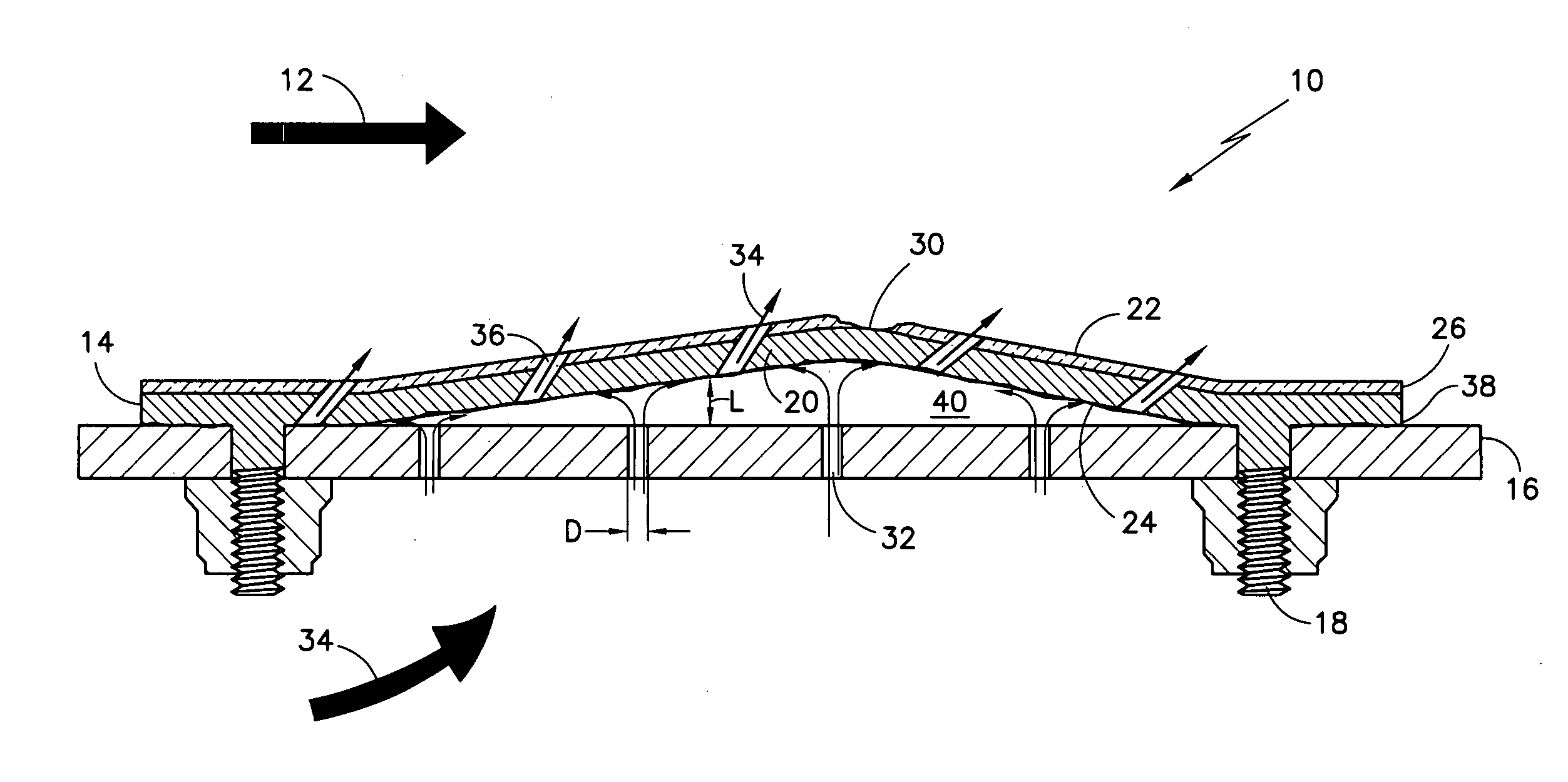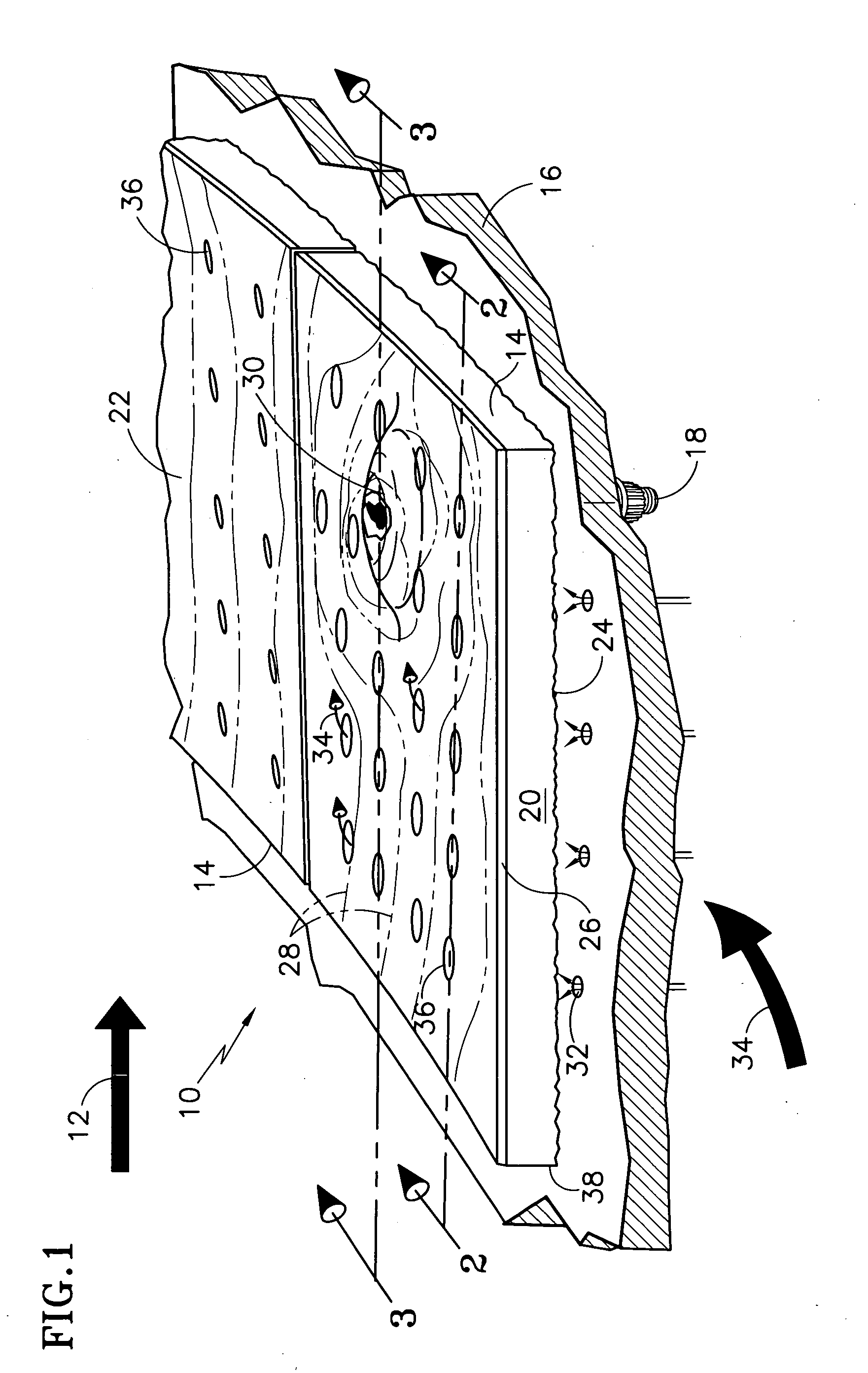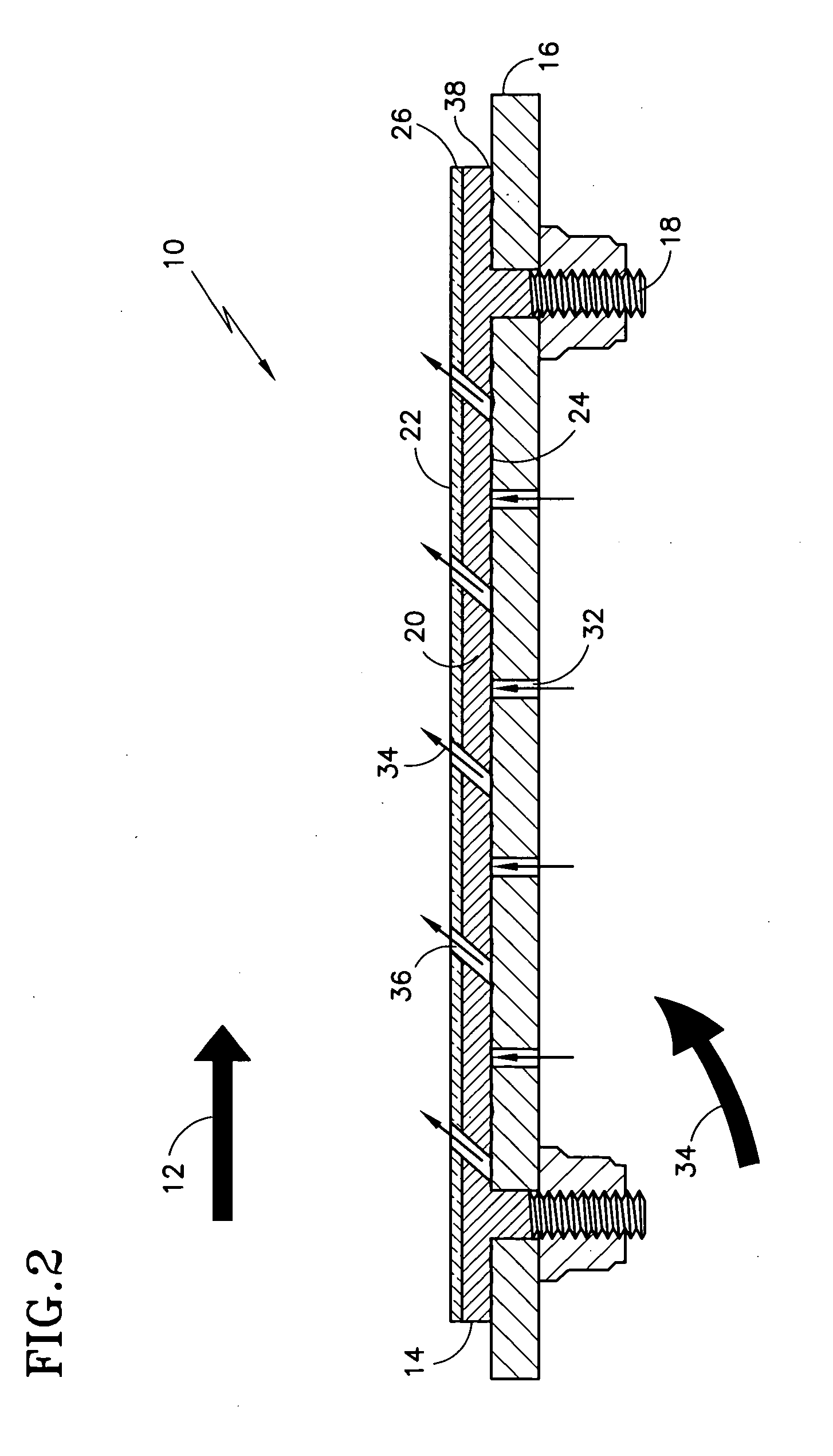Structures with adaptive cooling
a technology of adaptive cooling and structures, applied in mechanical equipment, machines/engines, light and heating equipment, etc., can solve problems such as local hot spots, and achieve the effect of reducing the effects of hot spots
- Summary
- Abstract
- Description
- Claims
- Application Information
AI Technical Summary
Benefits of technology
Problems solved by technology
Method used
Image
Examples
Embodiment Construction
[0016]Referring first to FIG. 1, an exemplary structure 10 with adaptive cooling, such as a gas turbine combustor heatshield or augmentor liner for example, is exposed directly to hot gas path air 12. A liner 14 is affixed to a mounting support 16 by fastening means 18 such as threaded studs, bolts, rivets, welds, or other fastening means known in the art. A liner wall 20 has a hot surface 22 facing away from the support 16 and a cold surface 24 contacting the support 16. The liner wall 20 may be made from a high temperature, cast, forged or sheet material such as Nickel or Cobalt for example. The hot surface 22 may also include one or more layers of thermal barrier coating (TBC) 26, such as a metallic or ceramic material, for improved insulation from the gas path air 12. Thermal gradient lines 28 depict the temperature differential across the hot surface 22 and indicate that a localized hot spot 30 location is present in the area of one of the liners 14. Spallation of the TBC layer...
PUM
 Login to View More
Login to View More Abstract
Description
Claims
Application Information
 Login to View More
Login to View More - R&D
- Intellectual Property
- Life Sciences
- Materials
- Tech Scout
- Unparalleled Data Quality
- Higher Quality Content
- 60% Fewer Hallucinations
Browse by: Latest US Patents, China's latest patents, Technical Efficacy Thesaurus, Application Domain, Technology Topic, Popular Technical Reports.
© 2025 PatSnap. All rights reserved.Legal|Privacy policy|Modern Slavery Act Transparency Statement|Sitemap|About US| Contact US: help@patsnap.com



